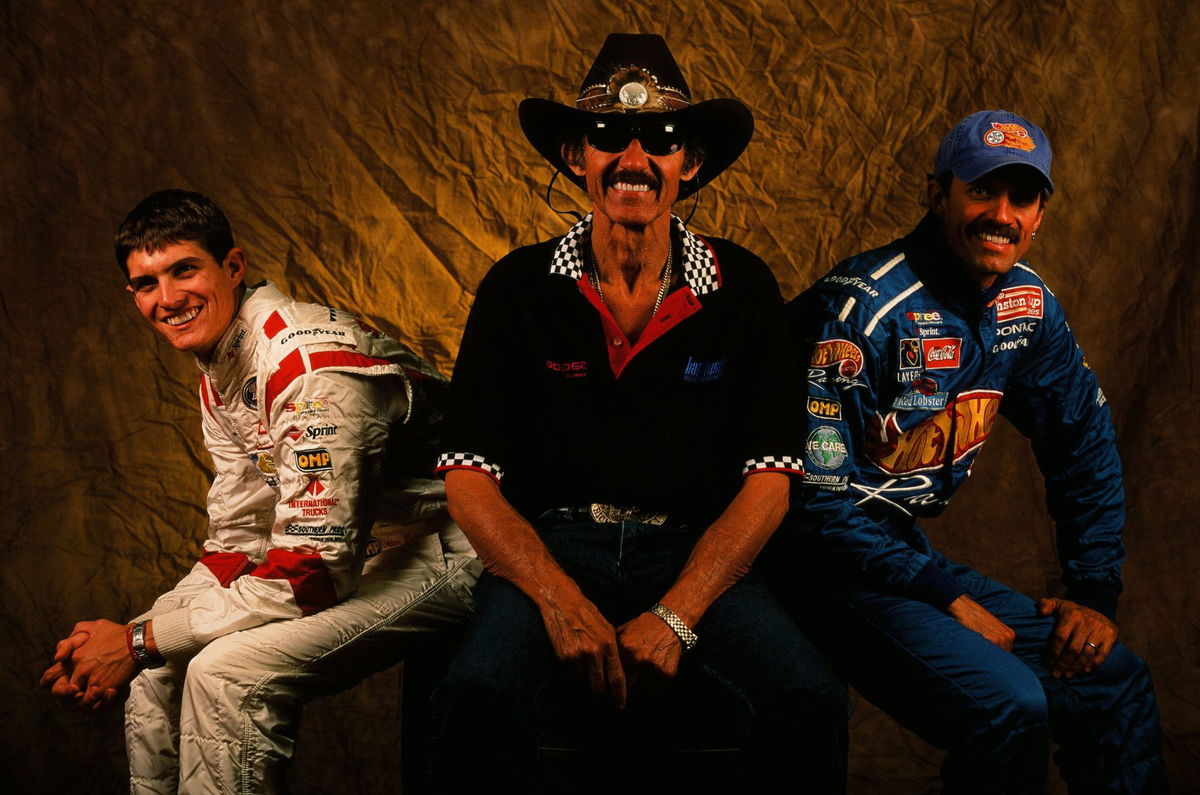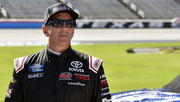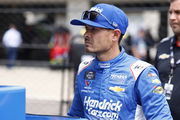
Getty
LEVEL CRISS, NC – SEPTEMBER 13: Richard Petty, Kyle Petty and Adam Petty pose for a photo on September 13, 1999 in Level Cross, North Carolina. (Photo by Sporting News via Getty Images via Getty Images)

Getty
LEVEL CRISS, NC – SEPTEMBER 13: Richard Petty, Kyle Petty and Adam Petty pose for a photo on September 13, 1999 in Level Cross, North Carolina. (Photo by Sporting News via Getty Images via Getty Images)
Daytona International Speedway and New Hampshire Motor Speedway are two tracks that gave NASCAR fans some of the most tragic incidents to remember. The sport’s hero and arguably one of the best NASCAR drivers, Dale Earnhardt met a tragic fate in 2001 at Daytona when he crashed head-first into the wall, taking away the community’s favorite driver. On the other hand, just a year before the sudden passing of ‘The Intimidator’, the NASCAR world wept the loss of Adam Petty who chillingly lost his life to the same injury as Earnhardt.
Watch What’s Trending Now!
Adam, a fourth-generation driver from the Petty racing family who had made his debut merely two years before his untimely death, was just 19 years old. The unfortunate passing forced the organization to amend massive safety measures to avoid such fatalities.
ADVERTISEMENT
The tragic passing of Adam Petty – Going back to the spine-chilling NASCAR qualifying crash in NHMS
Racing a fire-breathing monster at mind-bending speeds is no small feat. Scraping past cars and walls at triple-digit speeds to reach the finish line, these race car drivers are one step away from disaster. Imagine the odds when you add a ridiculously powered machine with nothing but basic driver protections like a roll cage and a poorly designed safety harness as the only measures that could save you if things go bad. Well, that pretty much was the situation back in the day before NASCAR decided to make amendments, thereby taking massive steps in the direction of drivers’ safety.
ADVERTISEMENT
However, as it turns out, the amendments came a bit too late as just 40 days after his NASCAR Cup debut in 2000, Adam Petty lost his life. Little did the young driver know that the qualifying session that year at New Hampshire Motor Speedway’s Busch 200 was going to be the last time he was to set foot inside a racecar. Coming into turn 3, Petty lost control of his car, slamming straight into the wall. With the accelerator jammed, the #45 car of the driver barreled into the outside wall at 130 miles per hour, killing him instantly.
ADVERTISEMENT
WATCH THIS STORY: The Daytona disaster: Richard Petty’s near-fatal encounter
The 19-year-old suffered a basilar skull fracture as his head and neck snapped violently upon impact. Adam’s father, Kyle Petty however continued to race, changing his brand badging to #45 in a solemn tribute to his late son.
Top Stories
Fact Check: Were Greg Biffle & Family On the Plane That Crashed At Statesville, North Carolina?

Who Is Greg Biffle’s Wife? Everything You Need to Know About Cristina Grossu

Kyle Larson’s Sprint Car Rivals Threatens Criminal Action Against Track Owner Over $15,000 Winner’s Purse

Footage Surfaces of Florida Police Arresting NASCAR Veteran Over Disturbing Public Misbehavior

Controversial Crew Chief Finds Fresh Start With 17-Yo NASCAR Team

ADVERTISEMENT
NASCAR’s safety amendments came a bit too late
Petty’s fatal wreck was in fact a cold reminder of the sport’s harsh reality, the vulnerability of its race machines, and how fast things can take a turn for the worse. Even though the organization did a prompt investigation into Adam Petty’s death, they failed to save another life as Kenny Irwin Jr died just two months after Adam was killed. In a spine-chilling turn of events, Irwin Jr lost his life from the same skull trauma as Adam, mere meters away from where the Petty prodigy perished.
Following Adam and Irwin’s death, the sanctioning body introduced a new safety feature for all of its cars: A red “kill switch” button that would shut power instantly. However, the kill switch didn’t do anything to address the underlying issue of lacking head safety in NASCAR vehicles. And as a heartbreaking reminder of the shortcoming, just a year later, the legendary Dale Earnhardt was killed in a vicious crash owing to the same injury.
It was then that NASCAR doubled down on its commitment to safety, mandating the use of HANS(Head and Neck Support) in October of 2001. The addition was certainly fruitful as, since then, NASCAR hasn’t seen any more driver deaths.
ADVERTISEMENT
The unfortunate passings paint a grim picture of how the early 2000s were a year of heartbreak and how they changed NASCAR forever.
ADVERTISEMENT
ADVERTISEMENT
ADVERTISEMENT

